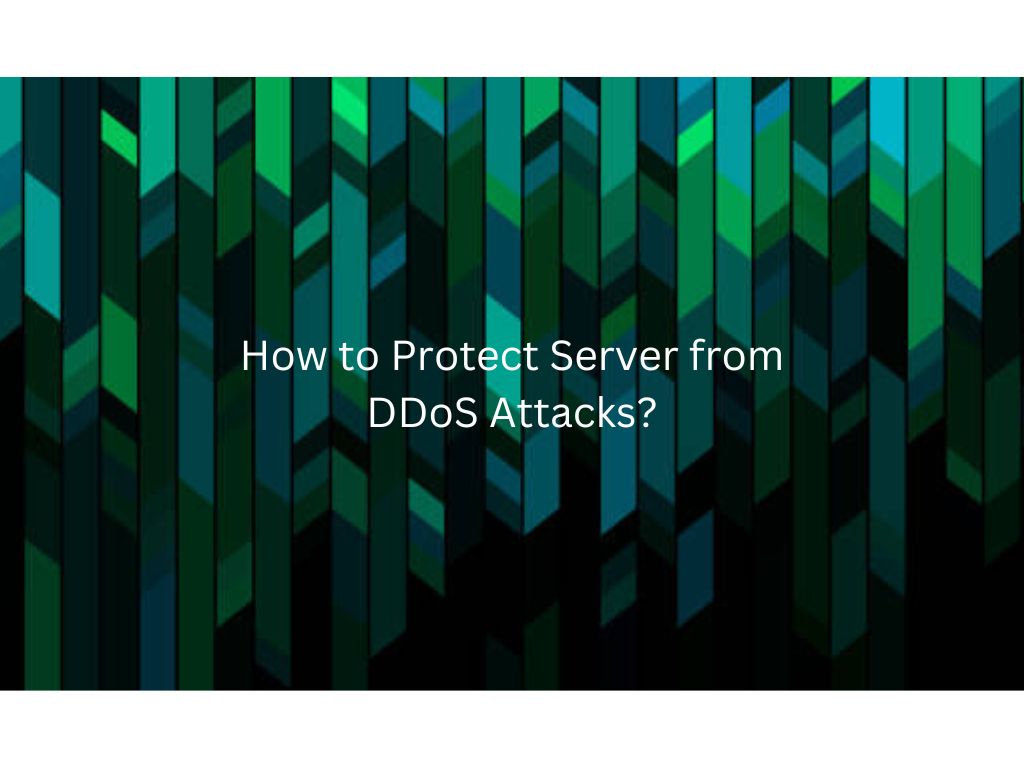In today’s digital landscape, Distributed Denial of Service (DDoS) attacks are a major threat to online businesses and services. These attacks can disrupt services, compromise sensitive data, and significantly harm your business’s reputation. Understanding how to protect server from DDoS attacks is essential for maintaining a secure and reliable online presence. This guide will provide you with key strategies to safeguard your server against these attacks.
Understanding DDoS Attacks
A DDoS attack involves overwhelming a server with a massive amount of traffic from multiple sources. This can cause the server to slow down or crash, making it inaccessible to legitimate users. There are three primary types of DDoS attacks:
- Volumetric Attacks: These attacks flood the server with high volumes of traffic, consuming all available bandwidth.
- Protocol Attacks: These exploit server weaknesses by sending malformed packets, exhausting server resources like CPU and memory.
- Application Layer Attacks: These target specific applications, such as web servers, by sending a high volume of requests to disrupt their functionality.
Key Strategies to Protect Your Server from DDoS Attacks
- Implement Robust Network Infrastructure A strong network infrastructure is the foundation of DDoS protection. Ensure that your infrastructure includes redundancy, load balancing, and failover systems to handle unexpected traffic surges. Distributing your resources across multiple data centers can prevent a single point of failure.
- Use DDoS Protection Services Invest in DDoS protection services from specialized providers like Haltdos and AWS Shield. These services use advanced techniques to detect and mitigate DDoS attacks before they reach your server, ensuring continuous availability and performance.
- Configure Firewalls and Routers Properly configured firewalls and routers can filter out malicious traffic before it reaches your server. Use access control lists (ACLs) to block traffic from known malicious IP addresses and implement rate limiting to prevent a single IP address from overwhelming your server with requests.
- Deploy a Content Delivery Network (CDN) A CDN distributes your content across multiple servers worldwide, reducing the impact of DDoS attacks by spreading the traffic load. This not only improves load times for users but also enhances your server’s resilience against high-volume attacks.
- Monitor Network Traffic Continuous monitoring of network traffic helps detect unusual patterns that may indicate a DDoS attack. Use network monitoring tools to set up alerts for sudden spikes in traffic or other anomalies, allowing for prompt response and mitigation.
- Implement Rate Limiting and Throttling Rate limiting restricts the number of requests a single IP address can make in a given time period, preventing excessive traffic from a single source. Throttling slows down the response rate for requests from suspicious IPs, giving you more time to analyze and respond to potential threats.
- Use Web Application Firewalls (WAFs) WAFs protect your web applications by filtering and monitoring HTTP requests. They can block malicious traffic and protect against application layer attacks, which are often part of a DDoS attack. Many WAFs also offer built-in DDoS protection features.
- Regularly Update and Patch Systems Keeping your systems up to date is essential for security. Regularly apply patches and updates to your operating system, server software, and applications to protect against vulnerabilities that could be exploited in a DDoS attack.
Responding to a DDoS Attack
Even with the best preventive measures, DDoS attacks can still occur. Having a response plan in place is crucial. Your response plan should include:
- Incident Response Team: Designate a team responsible for managing and mitigating DDoS attacks.
- Communication Plan: Have a plan for communicating with stakeholders, customers, and the public during an attack.
- Backup and Recovery: Ensure regular backups of your data and have a recovery plan to restore services quickly.
Conclusion
Protecting your server from DDoS attacks requires a multi-layered approach that includes robust infrastructure, advanced DDoS protection services, and continuous monitoring. By implementing the strategies outlined in this guide, you can significantly reduce the risk of a DDoS attack disrupting your services and causing damage to your business.




